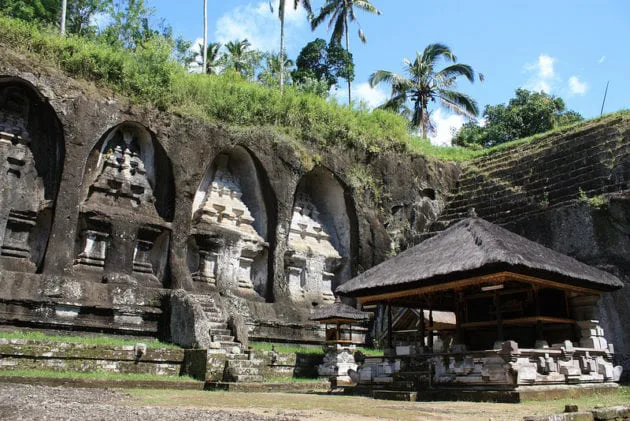
Exploring Bali’s Rich Tapestry: Unveiling Historical Landmarks
Bali, often celebrated for its natural beauty and vibrant culture, harbors a rich tapestry of historical landmarks that offer a glimpse into the island’s storied past. Embark on a journey through time as we unravel the significance of Bali’s historical landmarks, each bearing witness to the island’s captivating history and cultural evolution.
Besakih Temple: Bali’s Mother Temple
Nestled on the slopes of Mount Agung, Besakih Temple stands as Bali’s Mother Temple, a spiritual and historical icon. With a history dating back over a thousand years, Besakih is not only the largest but also the holiest temple on the island. Its intricate architecture, multiple shrines, and panoramic views make Besakih a testament to Bali’s deep-rooted spiritual heritage.
Goa Gajah: The Elephant Cave Sanctuary
Goa Gajah, or the Elephant Cave, is a historical site located near Ubud. Dating back to the 9th century, this cave complex features rock-wall carvings, a meditation cave, and bathing pools. The site holds cultural and historical significance, offering a glimpse into Bali’s ancient practices and artistic expressions.
Taman Ayun Temple: Mengwi’s Royal Legacy
Taman Ayun Temple, situated in Mengwi, is a royal temple dating back to the Mengwi Kingdom in the 17th century. Surrounded by a large moat and beautifully landscaped gardens, the temple exemplifies traditional Balinese architecture. Taman Ayun stands as a testament to the island’s historical ties to royalty and the enduring beauty of Balinese temple design.
Uluwatu Temple: Cliffside Majesty
Perched on the southwestern tip of Bali’s Bukit Peninsula, Uluwatu Temple is a majestic sea temple with a dramatic cliffside setting. Dating back to the 11th century, the temple is dedicated to the sea god, Dewi Laut. Uluwatu offers a captivating blend of history, spirituality, and breathtaking ocean views.
Kerta Gosa: The Hall of Justice
Kerta Gosa, located in Klungkung, is a historical landmark that served as the hall of justice for the Klungkung Kingdom. The main attraction is the intricately painted ceiling depicting scenes from Hindu epics. Kerta Gosa provides insight into Bali’s legal and cultural history, with its stunning artwork serving as a visual narrative of the island’s past.
Pura Ulun Danu Beratan: Lake Bratan’s Water Temple
Floating serenely on Lake Bratan, Pura Ulun Danu Beratan is a water temple dedicated to Dewi Danu, the goddess of water, lakes, and rivers. This iconic temple, dating back to the 17th century, reflects Bali’s harmonious relationship with its natural environment. The picturesque setting and historical significance make it a must-visit landmark.
Bajra Sandhi Monument: A Symbol of Independence
Located in Denpasar, the Bajra Sandhi Monument stands as a symbol of Bali’s struggle for independence. The monument’s architecture represents the Balinese philosophy of Tri Hita Karana, symbolizing the harmony between humans, nature, and the divine. The monument’s museum offers a comprehensive look at Bali’s history, from pre-colonial times to the fight for independence.
Pura Luhur Batukaru: Bali’s Mountain Temple
Nestled on the slopes of Mount Batukaru, Pura Luhur Batukaru is a mountain temple with a history dating back to the 11th century. The temple is surrounded by lush forest, offering a serene and spiritual ambiance. Pura Luhur Batukaru reflects Bali’s deep connection to its natural surroundings and the reverence for sacred mountain locations.
Ceking Rice Terraces: Subak’s Agricultural Heritage
While not a traditional temple, the Ceking Rice Terraces in Tegallalang hold historical and cultural significance. The intricate subak irrigation system, dating back over a thousand years, showcases Bali’s agricultural heritage. The verdant terraces are a testament to the island’s sustainable farming practices and the harmonious relationship between humans and nature.
Preserving Bali’s Heritage: Cultural Stewardship
As Bali’s historical landmarks attract visitors from around the world, there is a growing awareness of the need for cultural stewardship. Preserving these sites involves a delicate balance between tourism, conservation, and community engagement. Initiatives to protect and promote Bali’s heritage ensure that these historical landmarks continue to enchant and educate future generations.
Embark on a Journey Through Time: Bali Historical Landmarks Await
For those intrigued by the tales of ancient kingdoms, artistic expressions, and spiritual legacies, Bali’s historical landmarks offer a captivating journey through time. Plan your exploration and delve into the island’s rich history at [tiny-planes.com], where Bali’s cultural tapestry unfolds with each historical landmark visited.
